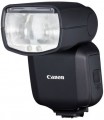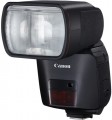Reload time
The time it takes the flash or generator (for studio flashes) to prepare for the next flash. The smaller it is, the better. This parameter is especially important for continuous shooting, when the interval between frames is small: if you often shoot in this mode, you should look for a flash with the shortest possible recycle time. Also note that the characteristics usually indicate the shortest recharge time; in some operating modes, it may be significantly more than stated.
Number of impulses
The number of flashes that the flash can fire without recharging the battery or changing batteries (see "Power"). This parameter is very approximate, because. in fact, it strongly depends on a number of factors: pulse duration, use of the display and its backlight (if any, see below), autofocus backlight (see "Features"), etc., and with replaceable batteries — even and on their quality. Often, manufacturers indicate in the characteristics the “perfect”, the maximum possible number of pulses — i.e. with their minimum duration, non-use of additional functions and even the optimal temperature regime for the battery. In reality, this figure may be lower. Nevertheless, the data indicated in the characteristics makes it quite possible to evaluate the battery life of the flash and even compare different models with each other.
Features
—
Autofocus assist light. The presence of an auxiliary illumination function in the flash for the camera's autofocus system. Modern cameras in the vast majority use the so-called passive autofocus systems, which have one serious drawback: very low efficiency in low light and/or low contrast of the subject being photographed. Autofocus assist light is designed to solve this problem: before focusing, the scene is illuminated by a separate lamp, located, in this case, directly in the flash body. This ensures a sufficient amount of light for normal autofocus operation. Most often, the backlight lamps give off light of a characteristic reddish hue, but some advanced models use infrared illumination - invisible to the eye, but perceived by the camera. In addition, backlight systems can use a special light pattern instead of a solid beam, which further simplifies the task of autofocus systems. In any case, the presence of this function is especially important given that the flash is often used as a light source in low light.
— On-camera control. The ability to change the flash settings using the controls of the camera to which it is connected. In some cases (for example, with a wireless connection), this is much more convenient than switching attention from the camera to the flash.
—
Automatic zoom. The ability to automatically change the flash light scattering angle. For the scattering angle
..., see the corresponding point above, but here we note that this function provides synchronization between the flash and the lens: when the focal length of the lens changes, the scattering angle automatically changes. This ensures the most effective illumination of the scene and at the same time saves you from having to manually readjust the flash each time to the changed viewing angle.
— Manual zoom. The ability to change the flash spread angle (see "Light spread angle") manually. This function expands the possibilities for "fine" adjustment of operating parameters and allows you to set parameters that are not available with automatic zoom (see above). In addition, it will be useful if you have to use several fixed lenses with different focal lengths - the flash can be easily adjusted for each of them.
— Operation in master mode. The ability to operate the flash as a master for a system of several flashes. The entire system is controlled via the master flash, the parameters of the slave flashes are set, and the command to fire is given (note that the master flash itself may not give a pulse at all). If you plan to shoot using a system of several flashes, you will definitely need a model with this function — without it, creating a system is impossible. Of course, the master and slave flashes must be mutually compatible; this point should be clarified separately.
— Slave mode. The ability to operate the flash as a slave in a system of several flashes. In this mode, the device is connected to the master flash and is triggered by a command from it. For more information on flash systems, see "Master mode operation" above.
— Radio synchronizer. A device designed for wireless control of a flash or a set of flashes (if each of them has its own receiver). Usually it is a separate module installed in a hot shoe; upon a command to trigger, this module sends a radio signal to all receivers tuned to it, ensuring synchronous triggering of the flashes. At the same time, some models of lamps with this function are capable of receiving via radio not only the trigger signal, but also the operating parameters (primarily the duration and power of the pulse).In the box
Additional items included with your flash or on-camera light.
—
1/4" mount. A special adapter with a standard 1/4" thread. Such mounts ensure compatibility of lighting equipment with universal accessories (for example, tripods), providing greater freedom in setting up the filming process.
—
Diffuser. A diffuser, or in other words a softbox, is an accessory that diffuses and softens the light emitted by an on-camera lighting device. Its use allows you to achieve a uniform nature of scene lighting, avoiding harsh shadows, glare and "overexposure". In the video light category, a diffuser can play a visual effect - change the color temperature or the color of the glow. Note that several different colored diffusers are often supplied in the kit.
—
Curtains. Adjustable plates in the form of characteristic petals that are attached to the on-camera light source and allow for flexible adjustment of light accents. Curtains are used to change the direction and distribution of the light flow — wide-open plates provide full coverage of the scene, while closed petals narrow the light flow and direct it “in the right direction” (i.e. to a specific part of the scene). Most often, curtains are used to adjust backlighting and background lighting.
— Battery. The presence of a battery in the delivery set of battery-powered lighting equipment. Eliminates th
...e need to purchase a battery separately. This item refers to a removable battery (see "Power source"), but may also indicate the absence of a battery in the standard package - in this case, you will need to purchase it additionally.
— Power supply. A device for connecting a lighting device to the mains. This connection can be used for two main purposes — operating the light source from a socket (see "Power supply from the mains") and charging the battery directly in the device itself. Modern models of on-camera lighting can support either one of these functions or both at once — the details should be clarified additionally. It should also be noted that not all devices with the ability to operate from the mains are initially equipped with power supplies — in some cases, such an accessory must be purchased separately.
— Charger. A device for charging the standard battery of a lighting device. Chargers are supplied with models that operate from specialized batteries of a removable design (see "Power source"). And if such a model allows charging the battery directly in the device, and the set includes an adapter for connecting to a socket, it is no longer considered a charger, but a power supply (see above).
— Remote control. As a rule, individual on-camera lights and lightsabers (see "Type") are equipped with a remote control. It allows remote control of the lighting device settings: turning it on and off, adjusting the brightness, changing the color temperature, activating various lighting effects, controlling several light sources combined into a group, etc. The actual set of remote control functions may differ depending on the specific implementation.
— Case/bag. The presence of a bag or case in the standard configuration of the lighting device. Bags are often equipped with handles or a strap for easy carrying, a case is somewhat simpler - it does not have handles and is designed to be carried in a bag for photographic equipment, a backpack, etc. A bag or case covers the device from dust and other contaminants, to some extent protects the contents from damage from impacts and falls.
